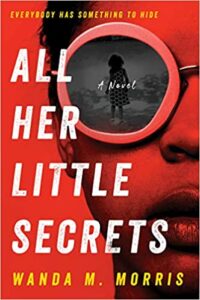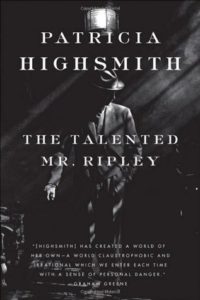We think we know the people around us, but what if we are wrong? What if we have fundamentally misunderstood who they are and how they see us—or, even worse, what if we have actively been deceived? It’s a destabilizing thought, and so it’s no wonder that these questions pulse beneath the surface of so many thrillers. The suspense genre is full of imposters, doppelgängers, and people who aren’t quite what they seem, forcing us to confront this fear head-on.
My newest book, The Ascent, features a woman who is trying to keep the fact that she was raised in a cult a secret from her husband and everyone else around her. That secret is threatened when a woman shows up at her front door claiming to be someone from her past. She must figure out what this woman really wants, and if she can trust her. Writing these characters led me to reflect on the different ways suspense novels play with identity, raising questions about how far belief can be stretched, the nature of perception, and the types of deception we are capable of. Below are seven books that play with identity in a variety of fun ways and feature some of the different types of imposters that appear in thrillers.

First Lie Wins (Ashley Elston):
The Con Artist.
The con artist is a classic imposter and used to great effect in Ashley Elston’s First Lie Wins. We are introduced to Evie Porter—not, of course, her real name. She works for the mysterious Mr. Smith and has just moved into a beautiful house with her doting boyfriend (and current mark). But Evie’s world is turned upside-down when someone shows up claiming to be her—using her real name and details about her real life. The con artist pulls us into a world where identities are fluid, no one can be trusted, and double-crossing is to be expected.

Trust Issues (Elizabeth McCullough Keenan and Greg Wands):
The Black Widower.
One specific—and deeply troubling—type of con artist is the black widow or widower. In Elizabeth McCullough Kennan and Greg Wand’s Trust Issues, influencer Hazel and food photographer/party boy drug dealer Kagan Bailey were both counting on a sizable inheritance when their mother died. They’re shocked to learn that she left them nothing but money for rehab, and the siblings begin to question whether their mother’s new husband is as harmless as he seems. The black widower often takes advantage of preexisting tensions in the family—and dysfunctional family dynamics abound here, with Succession-like tension between the siblings.

All Her Little Secrets (Wanda M. Morris):
The Woman with a Secret.
Another staple in suspense fiction is the woman with a secret past. Often the protagonist, this character has created a new life for herself and must decide how far she’ll go to protect it. In Wanda M. Morris’s All Her Little Secrets, Ellice Littlejohn has risen to success in the Atlanta legal scene, and the life she’s built would be threatened if people learned the truth about her childhood or her affair with her married boss. But her boss’s death—and Ellice’s discovery of his body—throws everything into turmoil. Morris has us cheering for the impostor, hoping she can figure out how to reconcile the fractured pieces of her history.

The Plot (Jean Hanff Korelitz):
The Fraud.
The fraud holds himself out as having talents or abilities that he does not really possess, and in the case of Jean Hanff Korelitz’s The Plot, it’s the ability to come up with a massive bestselling novel. Jacob Finch Bonner is a disgruntled creative writing teacher who has not come up with any good ideas of his own in a very long time. When he learns one of his former students has died, he steals the student’s brilliant—and unpublished—book idea, passing it off as his own. The book skyrockets him to fame and success, but there’s a price to be paid for his deception. The fraud is often not that sympathetic, even when he’s our protagonist—and instead of hoping for reconciliation, we want this character to get what’s coming to him.

The Disappearing Act (Catherine Steadman):
The Changeling.
One of the eeriest types of imposters is the changeling. Someone disappears and someone else reappears in their place, and only our protagonist realizes something is amiss. In Catherine Steadman’s The Disappearing Act, actress Mia Eliot has come to LA for pilot season, and she is troubled when her new friend, Emily, goes missing from an audition. Even more disturbing, however, is when “Emily” comes back but is obviously a different person. This type of imposter story is fertile ground for self-doubt and gaslighting, and often raises the question of which voices we take seriously.

The Likeness (Tana French):
The Doppelgänger.
Tana French’s The Likeness features another unsettling device in suspense fiction, the doppelgänger. Detective Cassie Maddox arrives at a crime scene to find a victim who looks exactly like her. She uses the resemblance to her advantage and goes undercover as the victim, moving into the beautiful manor house the victim shared with four other students and inserting herself into the uncomfortably close-knit group. In stories where the protagonist is the look-alike imposter, the question of whether she is actually fooling anyone looms large. Who is really deceived, and who is only pretending, hiding secrets of their own?

The Talented Mr. Ripley (Patricia Highsmith):
The Shapeshifter.
The shapeshifter does not simply take on a false identity, but is specifically trying to become his or her mark, and no list of imposter books would be complete without Patricia Highsmith’s classic, The Talented Mr. Ripley. Tom Ripley slowly works his way into the life of Dickie Greenleaf, a wealthy acquaintance who is hiding from his responsibilities on the Italian coast. Ripley is a shapeshifting psychopath, and the book is an unnerving look into his psyche.
***


















